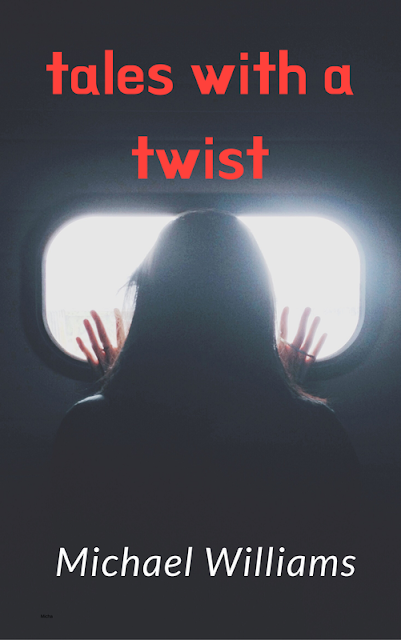Copyright 2020 by Gary L. Pullman
Characters,
incidents, settings, processes, and motives are among the persons,
places, and things that inspire horror. Pretty much anything can, as
long as it is eerie or lends itself to an eerie interpretation.
For
moviemakers, images often suggest horror. (They also horror to many
writers of other genre fiction as well, of course; C. S. Lewis, the
author Christian and children's fantasy and science fiction, for
example, said his stories often began with images.)
When
examining a picture—never merely look
at a picture, whether
it's a drawing, a photograph, a painting, or some other visual
representation; study
it in detail; then, wait a while and study it again—ask yourself,
Which question do I first
ask myself about the picture: who? what? when? where? how? or why?
The
right picture will speak to you. How can you be sure the picture
you're studying is the “right picture?” Easy. If it is, it will
let you know; it will speak to you.
Not
literally, of course. Not out loud. But it will suggest questions,
imply ideas, elicit emotions, show relationships between one of its
elements—color, perhaps—and others—texture, maybe, or shape.
One thought, one intuition, one feeling will lead to another and
another.
Before
you converse with pictures, it's helpful to know what sort of things
to study. Remember, too, that, in the Western world, people are
taught to read from left to right and from top to bottom. The most
important part of the image will be positioned close to the center of
the image.
Here
are some basic elements to consider: contrasts, colors, distance,
intensity, overlapping of objects, placement, position, shapes,
sizes, structural pattern (e. g., horizontal, diagonal, vertical,
sectional), text (if any), and textures.
On
the figurative level, consider whether the image alludes to anything
beyond itself, such as a work of art or an historical period; look
for visual metaphors; consider symbolism; and determine whether
personification is used. Often, if the picture has symbolic or
metaphorical significance and text, the text will act as the key to
unlocking the literal meaning suggested by the visual figure of
speech.
If
figures are included in the image, consider their sex, gender, age,
financial status, social class, costume, facial expression, posture,
pose, body language, and relationships to other figures, if any, and
to the objects, or “props,” if any, and the landscape or interior
space shown in the image.
Now,
let's try a simple exercise, using this image:
What
question first addresses itself to me is, Why
is the doll crying? In other words, I am most interested in the
question of motive. If
I am uncertain, I may hazard a guess, indicating it as such by
following the guess with a question mark in parentheses; if, as yet,
I have no answer, I will indicate this by using just a question mark.
Now
that I've determined my chief interest in the image, I should answer
the other, related questions:
Who? = doll
What? = crying
When? and Where = In the
darkness
How? = magic (?)
Why? = ?
Next,
I will “read” the image from right to left and from top to
bottom, making notes concerning questions, ideas, emotions, and
relationships between one of its elements of the image:
- Right eye is half-closed; left eye, open
- Right eye is dark; right eye, blue
- A teardrop on the doll's left eye suggests the toy is crying
- In comparison to the nose and mouth, the doll's eyes are exceptionally large—why?
- There is no background, just a close-up of the doll's seemingly large, round face
- The face is cracked and worn
These
are my initial observations. I should ask what each is intended to
suggest or mean. (In studying an image, especially if it was produced
by a professional artist, we should assume that every detail is
carefully thought out and is present for a purpose.)
- The right eye suggests thought, reflection; it seems to look inward. The left eye is open; the doll sees, but it also cries: whatever the doll sees seems to make it sad.
- There is only a single, large teardrop, which seems to imply that either the doll is no longer crying or has only just begun to cry; either it has cried itself out or it is only now being moved to tears.
- The relatively large eyes focus the viewer's attention on them, rather than on its nose or mouth. Its vision, thought, and emotion and what it sees are the important things.
- The setting is unknown, other than by darkness; the time and place are irrelevant. However, the darkness could symbolize fear, ignorance, or death, since black is often associated with one or all of these emotions or states of existence. The large size of the face also focuses the viewer's attention on the doll's face. Its face, the symbol of identity, like the doll's behavior—crying—are the focal points of the image, suggesting that these are the most important features of the picture.
- The crack in the doll's right cheek and the wear on its face could symbolize its suffering; it seems careworn, tired, and slightly injured.
Add
any additional observations:
- The image makes use of personification and symbolism.
- None of my observations answers my original question: Why is the doll crying? In other words, what is its motive?
At
this point, we are beyond the image. We are asking ourselves a
question that the image itself does not, and cannot, answer.
Therefore, we must use our imaginations, our knowledge of human
nature, and our own experiences as human beings to guess why a doll,
if it were capable of crying, might weep. In doing so, we should also
be true to the questions, ideas, emotions, and the relationships
between the focus feature of the image (in this case, the doll) and
the image's other, related elements.
We
can start by listing facts known about dolls:
- A doll usually belongs to a girl.
- A doll may be given to a girl as a gift, perhaps by her parents.
- A girl often invests her doll with a “personality” (personifies the doll).
- When a girl is not playing with her doll, the doll is often left by itself, perhaps in a dark place, such as a closet or a toy box.
- A girl may project her own emotions onto her doll.
- A girl may assign the role she plays in her present life to her doll.
Based
on these thoughts, we might construct a scenario to explain our
original question, Why
is the doll crying?
Melinda Jackson abandons her
doll, Bessie—not to a closet or to a toy box this time, but to the
alley behind her house, beside the trash cans to be
collected, along with the other trash, by the city's sanitation crew.
Melinda is sad to say goodbye to Bessie, who's been her dearest
companion, her confidante, her best friend for most of her life.
They've been through a lot, good times and bad. But Melinda is older
now—too old for Bessie—and, so, Melinda abandoned her doll. She
imagines Bessie alone in the dark alley, frightened and in despair,
crying, as Melinda herself is crying. But it is only a tear. She
brushes it away. Besides, Bessie is just a doll. Bessie can't really
cry.
The
idea for the story suggests three parts:
- Melinda becomes aware that she is “too old” for a doll. (Maybe she has a sleepover and her friends make fun of her for still having a doll.)
- Melinda is sad to say goodbye to her doll, but, convinced the time has come to part with Bessie, Melinda places Bessie in the dark alley behind her house to be hauled away by the city's sanitation crew.
- Twist ending
We
need to surprise the reader with an unexpected outcome to the story.
With Melinda's new awareness that she is “too old” for a doll (Part
I) and Melinda's abandonment of her doll so that Bessie can be hauled
away by the city's sanitation crew (Part II), we have set up the
expectation, in the reader's mind, that Bessie will be discarded.
There are several ways the story could end with a twist:
- One of the sanitation crew could take Bessie home for his own daughter to “adopt.”
- A dog could carry Bessie home, where another girl could “adopt” Bessie.
- Bessie really could be magical, and she could return to Melinda, who decides to keep her, after all.
Adopt
one of these twists or (or another possibility) and use it to write
part three of the story's summary:
III. Recovering from her
fright, Bessie walks back to Melinda's house, returns to
the girl's bedroom, with muddy feet, and takes her customary place
of honor on Melinda's bed. Shocked, Melinda decides Bessie is magic
and decides to keep her, regardless of her the taunts of her "friends."
The
fifteen basic needs identified by advertising executive Jib Fowles
should also be considered in relation to the image: the need to
achieve, the need for aesthetic sensations, the need for affiliation,
the need to aggress, the need for attention, the need for autonomy,
the need to satisfy curiosity, the need to dominate, the need to
escape, the need to feel safe, the need to nurture, the need for sex,
the need for prominence, and physiological needs (food, drink, sleep, etc.).
For example, in the sample story, Madeline feels the need for
affiliation (she has a sleepover), and Madeline feels the need for
autonomy (she feels that it is time for her to say goodbye to her
doll). By appealing to one or more of these basic needs, a story is
likely to allow readers to develop empathy for the narrative's
characters—in the case of the sample story, for both Madeline and
Bessie.
If
you'd care to try this approach for a story of your own, you might use
the following (or some other) image:

































